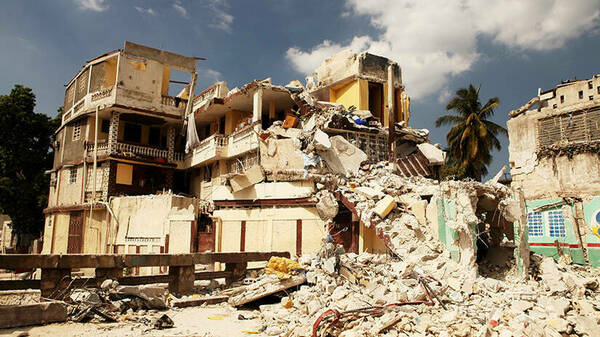
The earthquake in Turkey and Syria offers a tragic reminder that safe and dignified housing is one of the most overlooked human rights. Whether delivered as engineered multi-story apartments in urban zones or non-engineered single-family homes in rural areas, the failure of residential buildings continues to be the primary source of life loss in disasters.
Despite being outlined in Article 25, subsection 1 of the Universal Declaration of Human Rights, the availability of quality housing to support health, security, and prosperity is woefully insufficient. UN-Habitat estimates that 100 million people are homeless worldwide and that one in four lives in harmful conditions.
By 2030, projections suggest that as much as 40 percent of the world’s population will require adequate housing.
Catastrophes like the one that has decimated the earthquake-stricken areas in Turkey and Syria, where more than 50,000 people lost their lives, underscore how vulnerabilities in property markets place households in peril. Protracted conflict and escalating climate-induced stressors threaten to compound the risk of housing failures for poor and marginalized populations exposed to disasters.
The links between fragility and disaster risk are especially visible in Syria, where civilians dug through rubble, searching for family and friends as rescue teams and humanitarian aid struggled to reach the war-torn region.
The consequences of poverty, inequality, and marginalization uniquely manifest in the housing sector — due, in part, to historical neglect and primarily due to the challenges of meeting housing needs at scale. Housing services tend to be unequally distributed and often without support from a centralized authority, unlike human rights such as education and healthcare. (Instead, these are usually met through public and private investment in point-of-service delivery like schools and clinics.)
The devastation of the recent earthquakes stresses the importance of widely sharing best practices to couple scientific research on hazard-resilient design and cost-effective retrofitting technologies with a context-specific understanding of household risk perception, regulatory compliance, and attitudes toward proactive mitigation investment.
Today’s challenges in delivering safe and dignified housing on a large scale cannot be separated from our adoption of consolidated international building codes as the primary risk-reducing mechanism globally, despite their widespread failure to protect people due to local implementation and compliance challenges.
Well-developed countries of the Global North have made commendable progress in improving building safety over the last century using well-enforced building codes to regulate new construction and major renovations. However, these codes are based on the widespread use of manufactured and highly-engineered building materials such as concrete. This results in codifying a finite set of accepted building typologies, such as those used in Turkey and Syria, which require considerable expertise to design and construct safely.
The narrow list of typologies accepted by consolidated international building codes has unintentional consequences — promoting an aspirational standard for “modern living” that is unreachable without the strong governance and access to capital that supports people in the Global North. The world’s developing and least-developed countries — areas now experiencing the most growth and demand for housing — lack these enabling conditions and are often the regions at the highest risk for climatological and geophysical hazards.
Effectively priced out of safe and dignified housing, vulnerable households chase imported construction ideals by building informal block masonry and concrete structures. It leaves them to bear the disproportionate cost of disasters.
Beyond the human toll, perpetual rebuilding cycles after disasters generate large volumes of debris, significant environmental impacts in extracting wood, lime, and other natural resources, and carbon-intensive materials like cement for rebuilding. Yet, sadly, when turn-key solutions are deployed to “build back better,” they often fail to address the fundamental incompatibilities between the Global North’s blueprint for disaster risk reduction and the realities of housing market systems across the Global South.
Durable development outcomes that reduce poverty and inequality depend on urgent action to promote aggressive building codes and to invest in retrofitting existing infrastructure and redoubling our efforts to address quality control and compliance where feasible.
Lasting progress in reducing housing disparities and overall disaster risk will require fundamentally changing policies and practices in the broader housing delivery system. While this may be the solution for Turkey, this is not feasible for Syria and other regions crippled by conflict and weak governance. Instead, housing safety in these regions will require programs that promote new architectural and design paradigms that expand market choice beyond the materials and typologies espoused by international building codes.
Otherwise, households will be forced to self-recover within “a solutions void” with no choice but to re-implement the vulnerable housing designs exploited by the latest disaster — leaving them exposed, once again, to the next one.